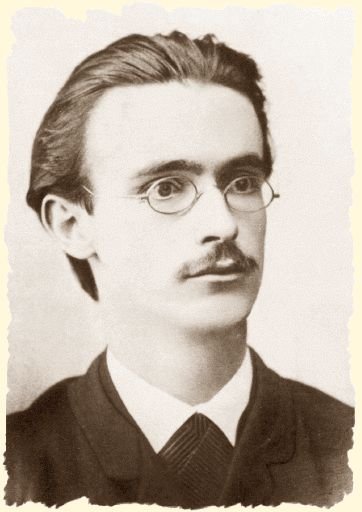We celebrated Founders Day yesterday, and each class from Constantia Waldorf School (except Playgroup and Kindergarten) went on an outing or did something special to enjoy this day. It is tradition that all Waldorf Schools around the world celebrate this special day.
Rudolf Steiner was born on 27 February 1861, which marks the 164th anniversary of his birth. Steiner ceremonially opened the first “Free Waldorf school” (Die Freie Waldorfschule) in Stuttgart in 1919 as a combined co-educational primary and secondary school for 256 children drawn mainly from the families of workers at the “Waldorf-Astoria Cigarette Factory”.
After World War 1 the German nation, defeated in war, was teetering on the brink of economic, social, and political crisis. Dr. Emil Molt, the owner of the factory, asked Steiner to address the workers about the need for social renewal, for a new way of organizing society and its political and cultural life. It is from here that the newly inspired Emile Molt asked Steiner if he would undertake to establish and lead a school for the children of the employees of the company. Steiner agreed but set four conditions, each of which went against common practice of Germany at the time:
1) that the school be open to all children;
2) that it be co-educational;
3) that it be a unified twelve-year school;
4) that the teachers, the individuals who are in contact with the children, have primary control of the school, with minimum interference from the state or from economic sources. Steiner’s conditions were radical for the day, but Molt gladly agreed to them.
Rudolf Steiner died on the 30th March 1925 (100 years this year) in Dornach, while still working on his autobiography, and the first Waldorf pupils were about to take their school leaving examinations. It was not long until World War 2 broke out in full force, and Nazi Germany shut the school down. In the meantime many other ‘ripples’ and ‘initiatives’ sprung up all over Europe, outside of Germany, keeping the flame of Steiner’s philosophy burning strong.
Only in 1945 there came a time of reconstruction and regrouping, and the 1950’s witnessed the Waldorf movement regaining energy and momentum. Moving along the timeline to 2025 the Waldorf School movement is now known for being the fastest growing independent school movement in the world. There are currently over 1200 fully functioning Waldorf schools around the globe… and this is why we celebrate Founders Day!
References – http://www.whywaldorfworks.org
Where did the name “Waldorf“ come from? A bit of History….
You will most likely have heard that the Waldorf School got its name from the Waldorf Astoria Cigarette Factory in Stuttgart, whose proprietor, Emil Molt, asked Rudolf Steiner to help him find a school for the children of his workers. What is less known is how Emil Molt came by the name in the first place.
Passionate about blending and rolling Turkish tobaccos into cigarettes, Emil Molt was looking to start his own manufacturing company in 1906 when he heard that the name “Waldorf Astoria Cigarettes” was up for grabs, the company having gone insolvent. Together with his partners he bought the trademark and logo and started an enterprise in Stuttgart, which was quickly linked to high quality hand rolled cigarettes.
The company had been introduced into Germany as a foreign affiliate to the Waldorf Astoria Cigar Company that belonged to the Waldorf Astoria Hotel in New York City – where the Cigar Company worked out of its basement. As such, it was a sister to the Waldorf Salad, which originated in the Waldorf Astoria’s kitchens. The Waldorf Astoria Hotel, in turn, was part of the enormously powerful holdings of the Astor family, whose origins go back to the American Revolution.
Johann Jakob Astor left his village of Walldorf in what is today the province of Baden in Germany. He travelled first to England, where he became an instrument maker, and then, bringing with him a number of recorders for sale, to the newly independent United States. There he became involved in the booming fur trade and soon established a virtual monopoly, expanding his business from coast to coast and building the port of Astoria in Oregon to open trade with China. John Jacob Astor, as he called himself, is hence linked to the very foundations of our global capitalist economy, becoming America’s first multi-millionaire and the founder of its first trust. He never forgot his origins in Walldorf, sending generous donations there and introducing the name, written with one ‘L’, into his family.
Over a century later, in 1919, the year of the founding of the Waldorf School, we find the British member of parliament, Waldorf Astor, forced to leave the House of Commons to sit in the House of Lords on inheriting a Viscountcy from his father. His wife, Nancy Astor, took over his constituency, becoming Britain’s first female MP, famous for her altercations with Winston Churchill. There is a slightly risqué, but nevertheless interesting parallel worth mentioning. The year before, 1918, Millicent Mackenzie, Britain’s first ever woman professor, had unsuccessfully stood for election as the first woman parliamentary candidate for Wales. It was she who later invited Rudolf Steiner to begin his courses for British teachers and educators and initiated the start of the Rudolf Steiner Schools in Britain.”
Written by Eric Hurner
